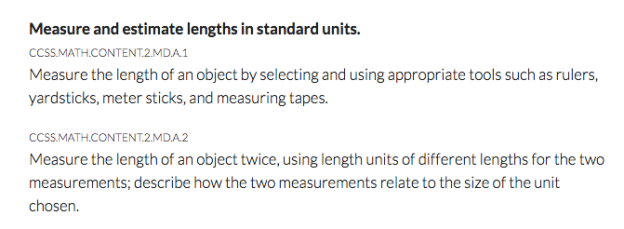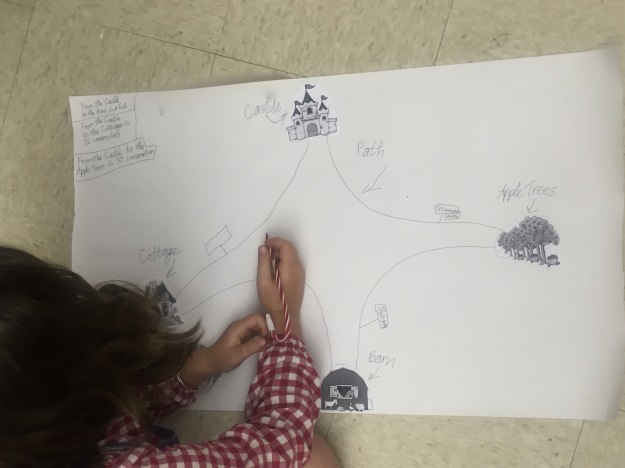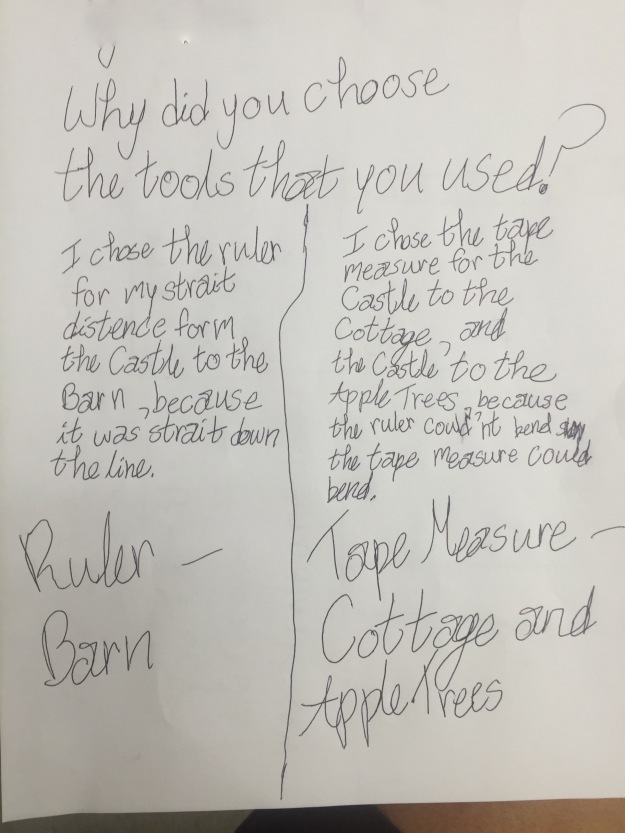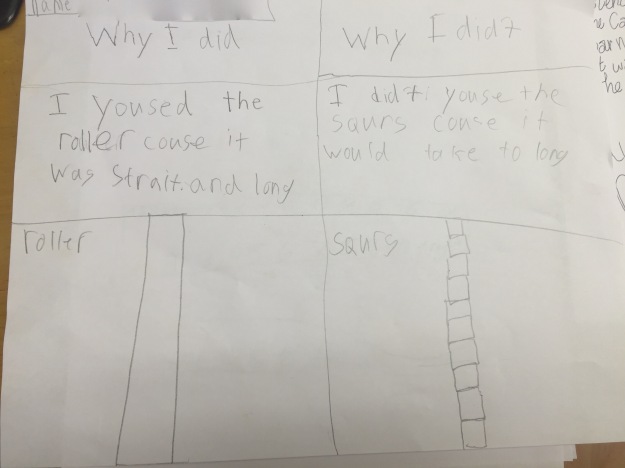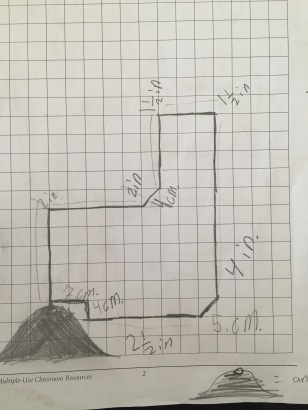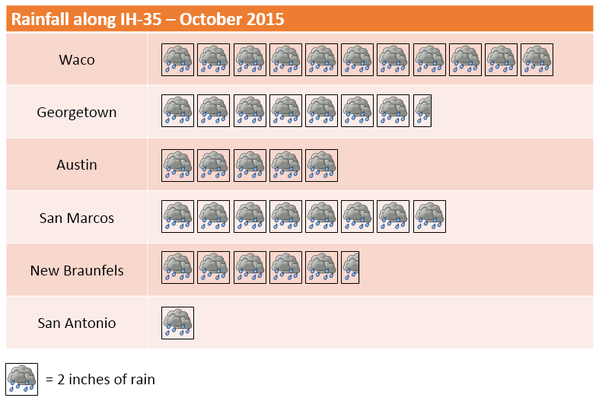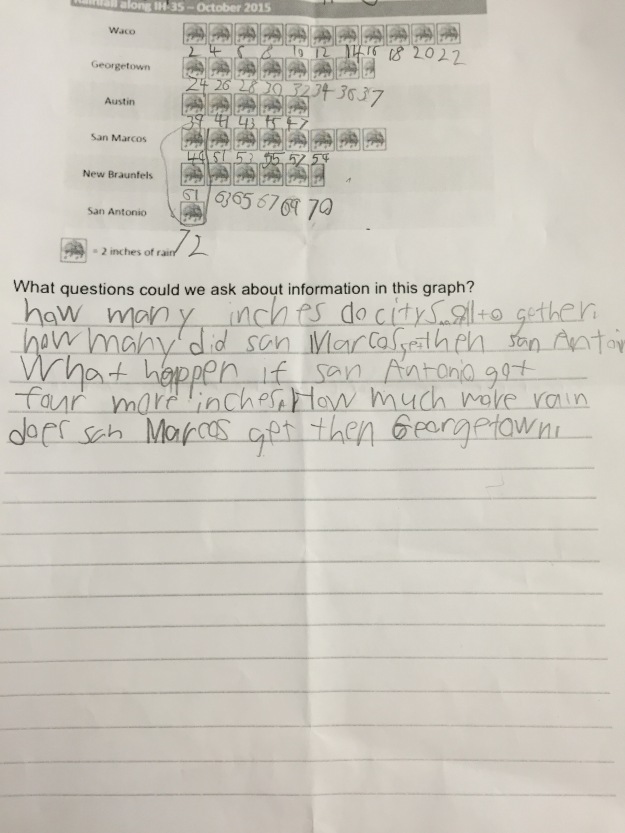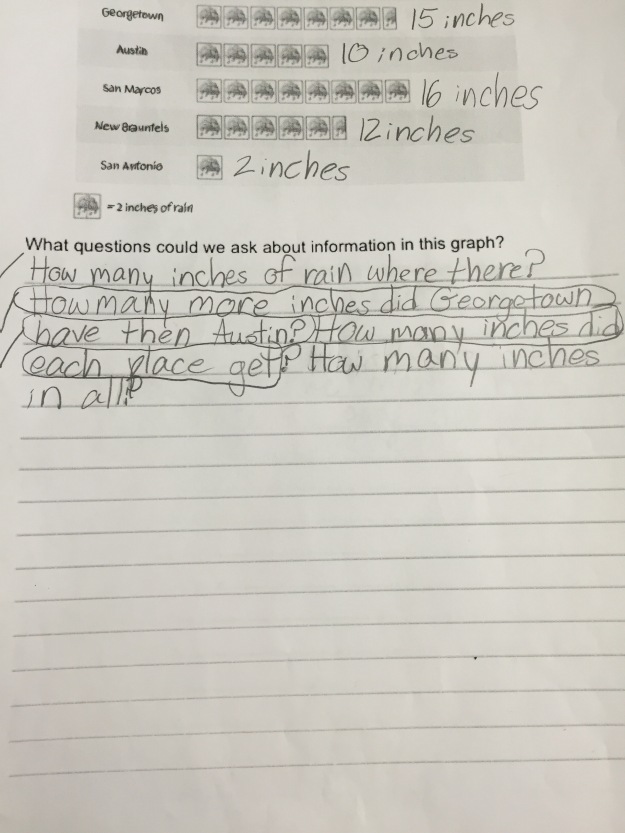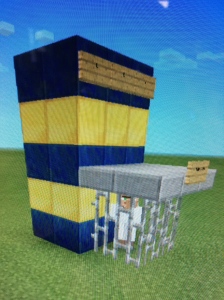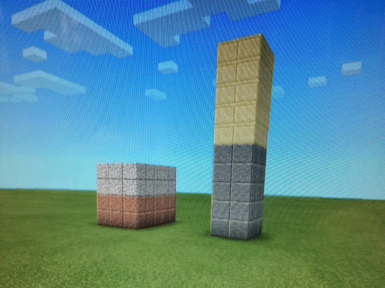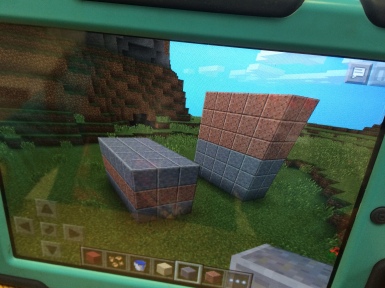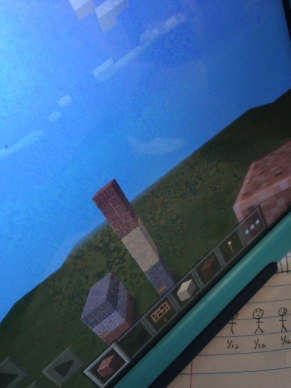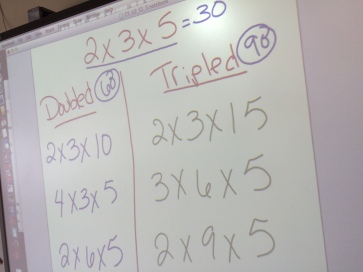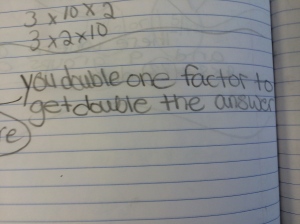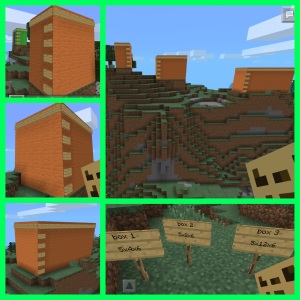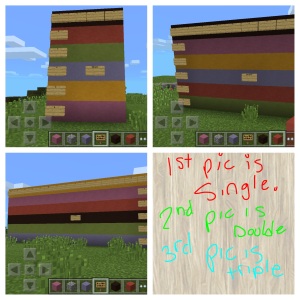Since the 3rd graders just wrapped up their unit on area, I thought it was the perfect time to do a task that hit on some really important ideas about area, while also encouraging them to move beyond counting squares. I wanted to see how (or if) students broke apart shapes to find the area, how they used addition and/or multiplication to more efficiently count squares, and if they used any other strategies such as subtracting out blank spaces or decomposing and rearranging pieces to find the area.
I chose this task from Illustrative Mathematics.
We started with a notice/wonder activity:


They had so many great wonders that inspired me to think about a follow up activity about other letters, but I will chat about that later.
Since they wondered if the letters all had the same square units and if they were all the same, I used that as the lead into the activity. Even as I was giving directions, however, I saw a majority of them start to count squares by 1. I paused them, told them I was so excited to see they knew counting the squares would get them the area and knew they all could find the correct area that way so we were going to try something different. I asked them to find the area without counting all of the square by 1.
In looking at the work, I saw them as a bit of a progression of thinking. I put them in order here of how I see students moving through these ideas about area.
As I expected, some counted each row and added them. It was great they know area is additive, but I would love to ask this student if there is a way they could have used multiplication to make it a bit easier.
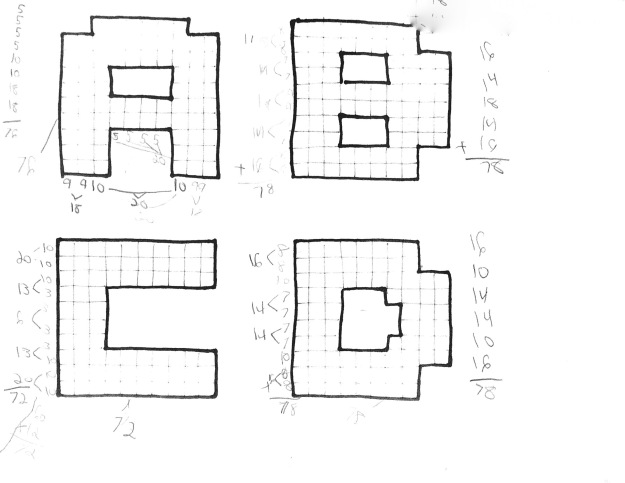
Some added in chunks, to which I would love to ask the same question. I was excited to see them cutting the shapes up into rectangles in places that made sense.
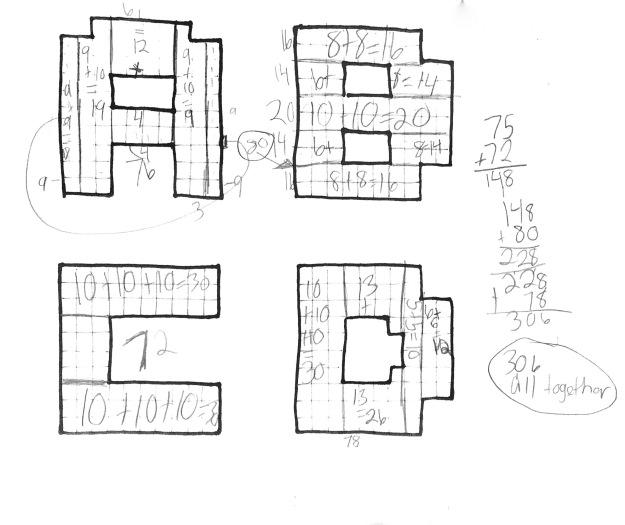 From there, some used a mix of addition and multiplication. I would love to ask these students how they decided where to make their cuts.
From there, some used a mix of addition and multiplication. I would love to ask these students how they decided where to make their cuts.
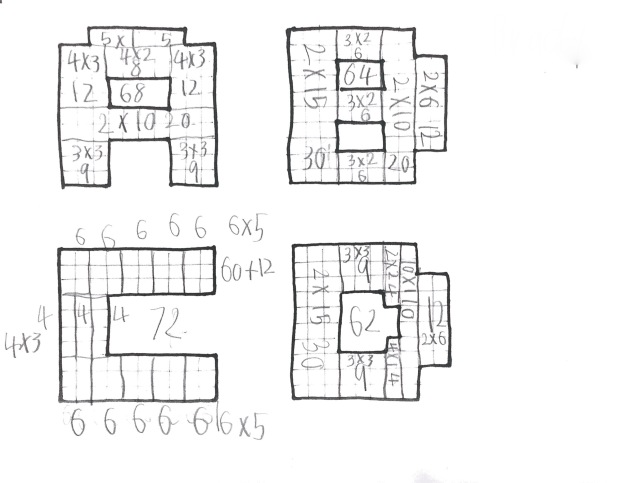
Some students made some larger cuts and I would love to have them meet with the student above and discuss how they decided on their cuts.
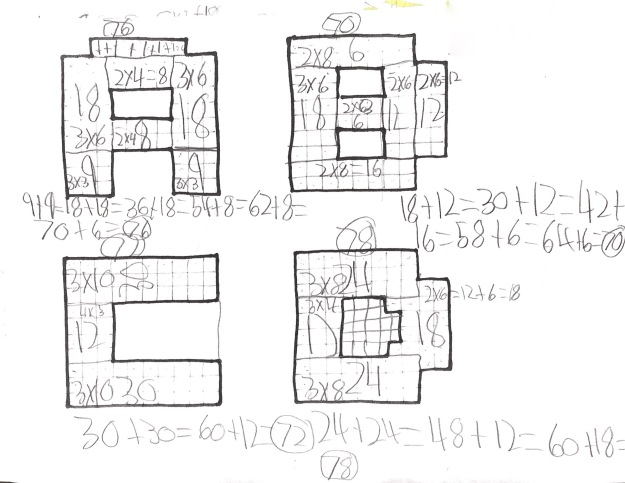
Some used some of the strategies above but also relied a bit on symmetry.
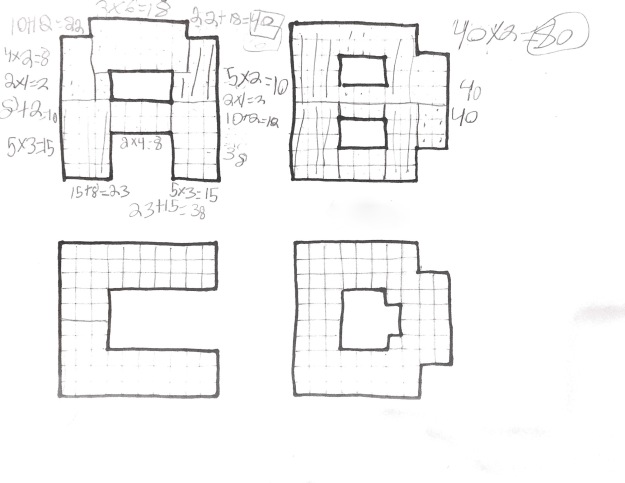
Finally, I saw 2 students moving squares from the “bumps” to the empty spaces.
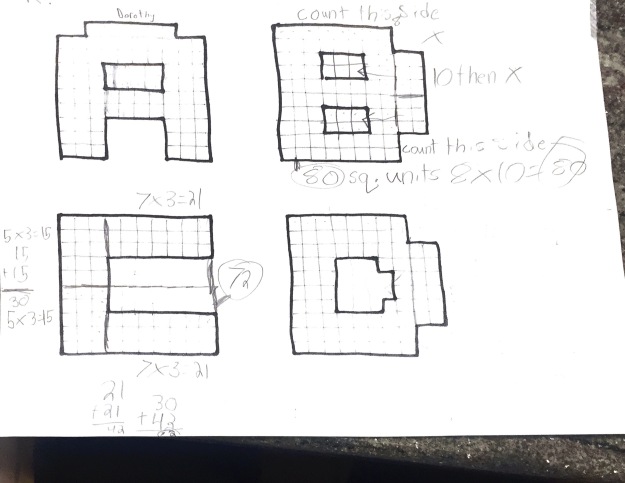
It was always interesting to me that in 5th grade I would still see students find the area of shape on a grid by counting the individual squares even though I know they had better strategies. I think it is the fact that students jump into doing things without thinking about the things first. This is why I think journal writing is so important. It allows students to be more reflective about their decisions.
I asked them to write about which shape was the easiest to find the area and which was the most difficult. It was interesting to see some focus on the size of the number they were working with while others focused on the shape and how it could be partitioned.
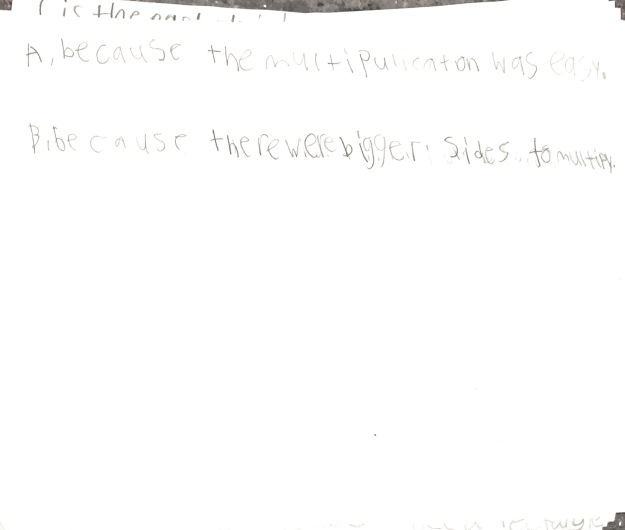
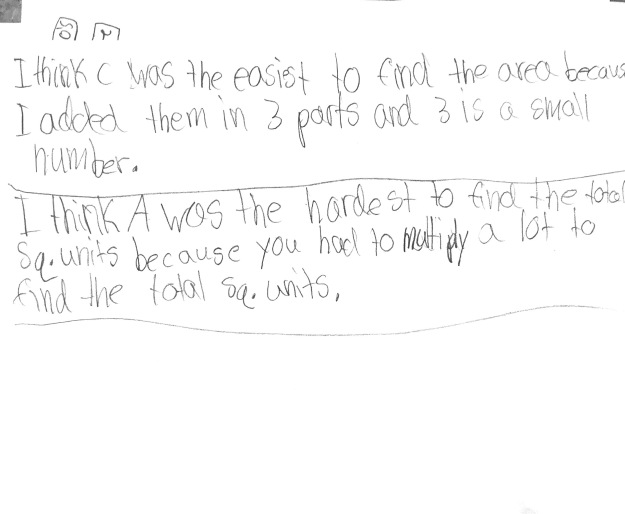
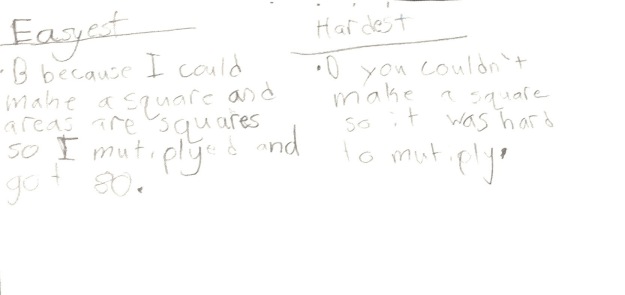

As a follow-up activity, I am going to ask them to choose a letter where they would use the same strategy they used with C and a letter where they would use the same strategy they used with B.







